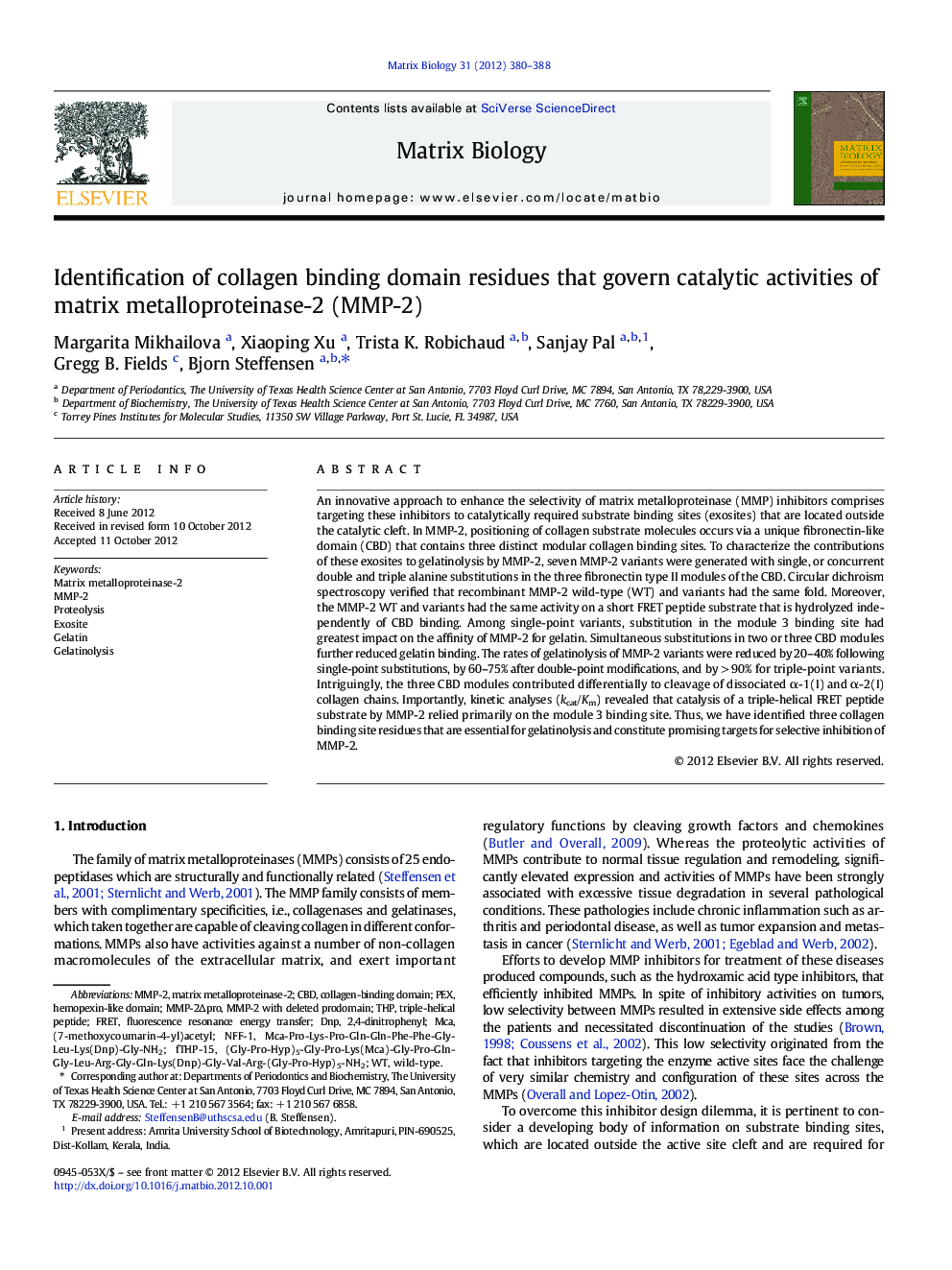| کد مقاله | کد نشریه | سال انتشار | مقاله انگلیسی | نسخه تمام متن |
|---|---|---|---|---|
| 2144827 | 1548026 | 2012 | 9 صفحه PDF | دانلود رایگان |

An innovative approach to enhance the selectivity of matrix metalloproteinase (MMP) inhibitors comprises targeting these inhibitors to catalytically required substrate binding sites (exosites) that are located outside the catalytic cleft. In MMP-2, positioning of collagen substrate molecules occurs via a unique fibronectin-like domain (CBD) that contains three distinct modular collagen binding sites. To characterize the contributions of these exosites to gelatinolysis by MMP-2, seven MMP-2 variants were generated with single, or concurrent double and triple alanine substitutions in the three fibronectin type II modules of the CBD. Circular dichroism spectroscopy verified that recombinant MMP-2 wild-type (WT) and variants had the same fold. Moreover, the MMP-2 WT and variants had the same activity on a short FRET peptide substrate that is hydrolyzed independently of CBD binding. Among single-point variants, substitution in the module 3 binding site had greatest impact on the affinity of MMP-2 for gelatin. Simultaneous substitutions in two or three CBD modules further reduced gelatin binding. The rates of gelatinolysis of MMP-2 variants were reduced by 20–40% following single-point substitutions, by 60–75% after double-point modifications, and by > 90% for triple-point variants. Intriguingly, the three CBD modules contributed differentially to cleavage of dissociated α-1(I) and α-2(I) collagen chains. Importantly, kinetic analyses (kcat/Km) revealed that catalysis of a triple-helical FRET peptide substrate by MMP-2 relied primarily on the module 3 binding site. Thus, we have identified three collagen binding site residues that are essential for gelatinolysis and constitute promising targets for selective inhibition of MMP-2.
► We identified collagen binding site residues that govern catalysis by MMP-2.
► Three collagen binding sites contributed differently to gelatinolysis by MMP-2.
► Cleavage of α1(I) and α2(I) collagen chains involves specific binding sites in MMP-2.
► Collagen binding sites are promising targets for selective MMP-2 inhibitors.
Journal: Matrix Biology - Volume 31, Issues 7–8, September–October 2012, Pages 380–388